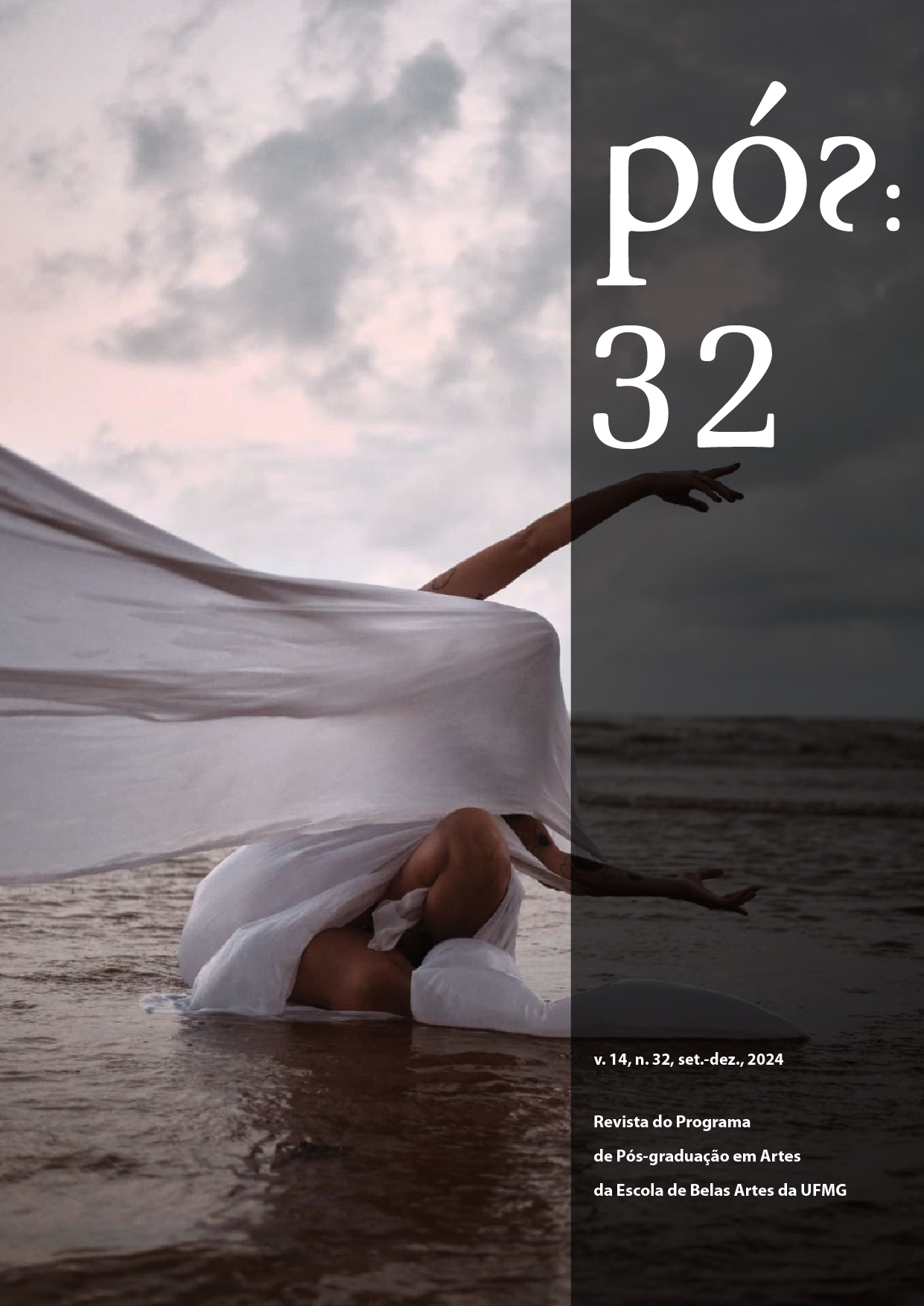The Masquerade in Film
Psychoanalysis and Feminism in Promising Young Woman
DOI:
https://doi.org/10.35699/2238-2046.2024.52754Keywords:
Mary Ann Doane, Masquerade, Film, Femininity, Promising Young WomanAbstract
This paper presents the theory of the masquerade in film, as proposed by Mary Ann Doane, with the aim of investigating its relevance as a foundation for a method of feminist analysis aimed at the construction of the subjectivity of female characters in works of fiction. Based on the production design of the movie Promising Young Woman (2020), by Emerald Fennell, this paper seeks to discuss to what extent the protagonist uses her femininity as a masking artifact that, in its many variations, allows her to plan a process of revenge as a means of dealing with a traumatic experience of sexual abuse.
References
BELA vingança. Direção: Emerald Fennel. Produção: Margot Robbie, Emerald Fennel, Josey
McNamara, Tom Ackerley, Ben Browning, Ashley Fox. Roteiro: Emerald Fennel. Los Angeles: Film
Nation Entertainment: Lucky Chap Entertainment, 2020. (113 min).
BUTLER, Judith. Atos performáticos e a formação dos gêneros: um ensaio sobre fenomenologia e
teoria feminista. In: HOLLANDA, Heloisa Buarque de (org.). Pensamento feminista: conceitos
fundamentais. Rio de Janeiro: Bazar do Tempo, 2019. p. 356-377.
CAMPOS, Carmen; MACHADO, Lia; NUNES, Jordana; SILVA, Alexandra. Cultura do estupro ou cultura
antiestupro? Revista Direito GV, São Paulo, v. 13, n. 3, p. 981-1006, set./dez. 2017.
DELEUZE, Gilles. A Imagem-Tempo. São Paulo: Brasiliense, 1990.
DOANE, Mary Ann. Femmes Fatales: Feminism, Film Theory, Psychoanalysis. New York/London:
Routledge, 2008.
ENDO, Paulo Cesar. Violências, elaboração onírica e o horizonte testemunhal. Temas em Psicologia,
v. 17, n. 2, p. 343-349, 2009.
FREUD, Sigmund. Obras completas, volume 12: Introdução ao narcisismo, ensaios de
metapsicologia e outros textos (1923-1925). Tradução: Paulo Cézar de Souza. São Paulo: Companhia
das Letras, 2010.
FREUD, Sigmund. Luto e melancolia. São Paulo: Cosac Naify, 2014.
FREUD, Sigmund. Some Psychological Consequences of the Anatomical Distinction Between the
Sexes. In: FREUD, Sigmund. Sexuality and the Psychology of Love. Edited by Philip Rieff. New York:
Collier, 1963. p. 187-188.
HELLER, Eva. A psicologia das cores: como as cores afetam a emoção e a razão. São Paulo:
Garamond, 2014.
HERMAN, Dianne F. The Rape Culture. In: FREEMAN, Jo (ed.). Women: A Feminist Perspective. 3rd Ed.
Palo Alto: Mayfield, 1984. p. 20-44.
hooks, bell. O feminismo é para todo mundo: políticas arrebatadoras. Rio de Janeiro: Rosa dos
Tempos, 2019.
IRIGARAY, Luce. This Sex Which is Not One. Ithaca: Cornell University Press, 1985.
KAPLAN, Ann. A mulher no cinema segundo Ann Kaplan. [Entrevista cedida a] Denise Lopes. Revista
Contracampo, Niterói, n. 7, 2014.
KAPLAN, Elizabeth Ann. Women and Film: Both Sides of the Camera. New York: Methuen, 1983.
LAURETIS, Teresa de. Tecnologia de gênero. In: HOLLANDA, Heloisa Buarque de (org.). Pensamento
feminista: conceitos fundamentais. Rio de Janeiro: Bazar do Tempo, 2019. p. 124-161.
MONTRELAY, Michèle. Inquiry into femininity. m/f, a Feminist Journal, London, Issue 1, p. 83-101,
MULVEY, Laura. Prazer visual e cinema narrativo. In: XAVIER, Ismail. A experiência do cinema. Rio de
Janeiro: Graal, 1983. p. 437-453.
MULVEY, Laura. Afterthoughts in ‘Visual Pleasure and Narrative Cinema’ inspired by King Vidor’s Duel
in the Sun (1946). In: SIMPSON, Philip; UTTERSON, Andrew; SHEPHERDSON, Karen J. (org.). Film
Theory: Critical Concepts in Media and Cultural Studies. London/New York: Taylor & Francis, 2004.
p. 68-77.
RIVIERE, Joan. Womanliness as a Masquerade. International Journal of Psycho-Analysis, v. 9,
p. 303-313, 1929.
WITTIG, Monique. Não se nasce mulher. In: HOLLANDA, Heloisa Buarque de (org.). Pensamento
feminista: conceitos fundamentais. Rio de Janeiro: Bazar do Tempo, 2019. p. 85-94.
Downloads
Published
How to Cite
Issue
Section
License
Copyright (c) 2024 Roberta Oliveira Veiga, Sthael Gomes dos Santos Patrício

This work is licensed under a Creative Commons Attribution-NonCommercial 4.0 International License.
Authors who publish in this journal agree to the following terms:
- Authors retain copyright and grant the journal the right of first publication, with the work simultaneously licensed under the a Creative Commons Attribution-NonCommercial 4.0 International License that permits sharing of the work with acknowledgement of authorship and initial publication in this journal;
- Authors are permitted to enter into additional contracts separately, for non-exclusive distribution of the version of the work published in this journal (e.g., the Creative Commons Attribution License).
- Authors are permitted and encouraged to publish and distribute their work online (e.g., in institutional repositories or on their home page) at any point before or during the editorial process, as this may generate productive changes as well as increase the impact and citation of the published work.
- It is the responsibility of the authors to obtain written permission to use in their articles materials protected by copyright law. Revista PÓS is not responsible for copyright breaches made by its contributors.












